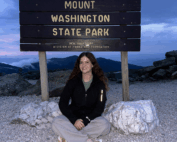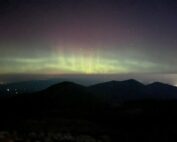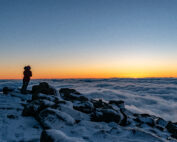Convection
2016-07-13 16:26:28.000 – Andrea LaRocca, Summit Intern
It’s the start to another great week here on Mount Washington. To start the week off with a bang, we have the potential for some thunderstorms this evening. With plenty of sunshine still peeking through, we’re crossing our fingers for a good one today. With the likelihood of us being in and out of the clouds for the next couple of days and rain showers possible, the welcome sight of severe weather is always one we will take. As clouds form during the day, a consequence of day time heating, small pockets of warm air channels form and rise. These air channels, also known as thermals, create means for enhanced lift or updrafts in the atmosphere. These thermal updrafts are not visible to eye, however you can spot them fairly easily by looking for birds that “ride” them—if you see a bird hovering over an area without flapping its wings, it is likely that they are utilizing this natural phenomenon. These updrafts allow air parcels to cool and condense at a rapid pace in a process called convection.
Andrea LaRocca, Summit Intern
From Weather Observer to Intern, to Observer Again
From Weather Observer to Intern, to Observer Again By Madelynn Smith As I rode in the backseat of our Obs van up the Auto Road for the first time as a full-time employee at
From Mountains to More Mountains
From Mountains to More Mountains: This Time with Stronger Winds By Alyssa Bélanger On the observation deck in high winds. Hello there! My name is Alyssa Bélanger and I am a fall
From Summit to Sign-Off: My Farewell to the Rockpile
From Summit to Sign-Off: My Farewell to the Rockpile By Amy Cotter Enjoying my last Mount Washington sunset (for now) on September 13, 2025. After two incredible years with the Mount Washington




